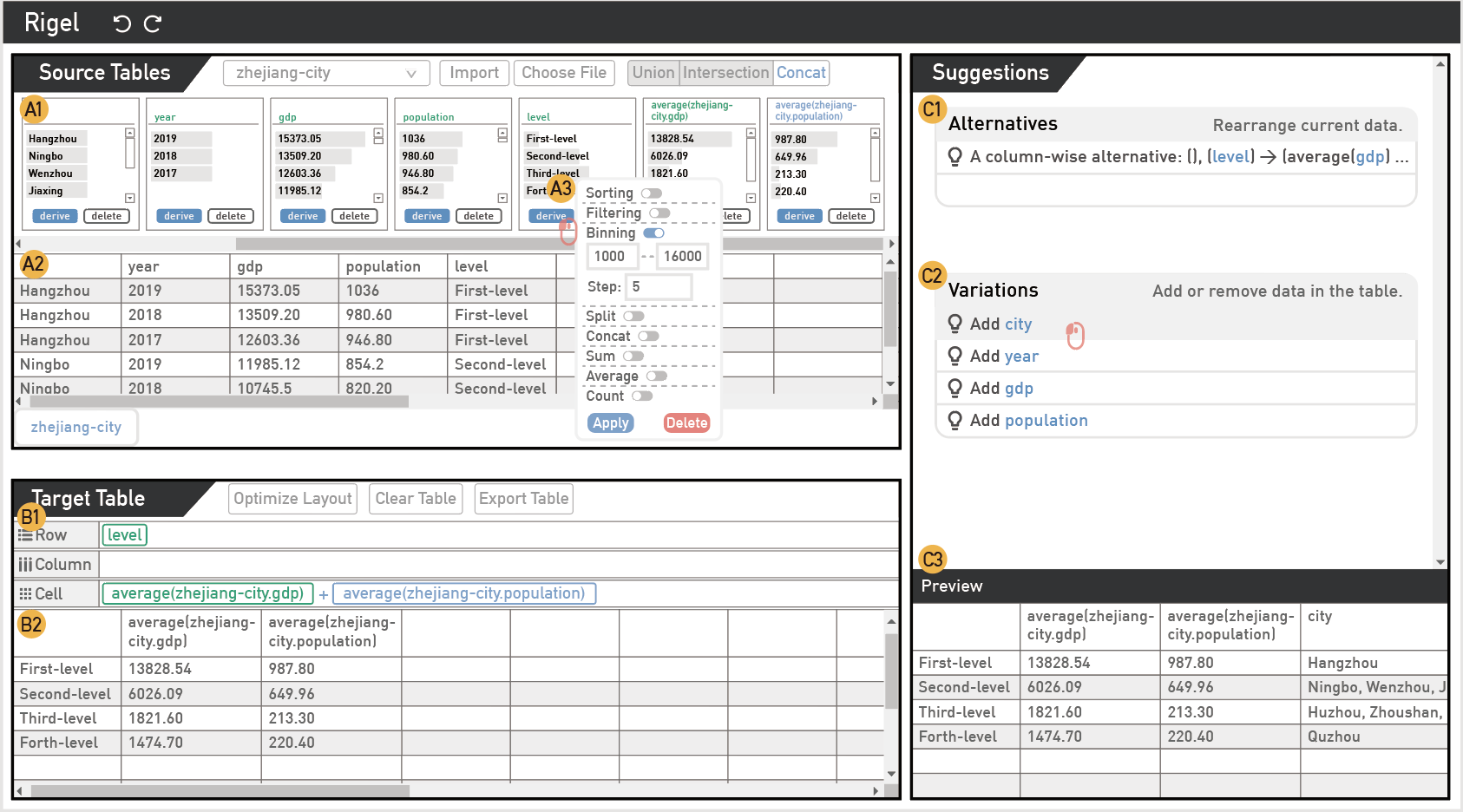Rigel: Transforming Tabular Data By Declarative Mapping
Ran Chen, Di Weng, Yanwei Huang, Xinhuan Shu, Jiayi Zhou, Guodao Sun, Yingcai Wu
View presentation:2022-10-19T14:24:00ZGMT-0600Change your timezone on the schedule page
2022-10-19T14:24:00Z

Prerecorded Talk
The live footage of the talk, including the Q&A, can be viewed on the session page, Transforming Tabular Data and Grammars.
Fast forward
Abstract
We present Rigel, an interactive system for rapid transformation of tabular data. Rigel implements a new declarative mapping approach that formulates the data transformation procedure as direct mappings from data to the row, column, and cell channels of the target table. To construct such mappings, Rigel allows users to directly drag data attributes from input data to these three channels and indirectly drag or type data values in a spreadsheet, and possible mappings that do not contradict these interactions are recommended to achieve efficient and straightforward data transformation. The recommended mappings are generated by enumerating and composing data variables based on the row, column, and cell channels, thereby revealing the possibility of alternative tabular forms and facilitating open-ended exploration in many data transformation scenarios, such as designing tables for presentation. In contrast to existing systems that transform data by composing operations (like transposing and pivoting), Rigel requires less prior knowledge on these operations, and constructing tables from the channels is more efficient and results in less ambiguity than generating operation sequences as done by the traditional by-example approaches. User study results demonstrated that Rigel is significantly less demanding in terms of time and interactions and suits more scenarios compared to the state-of-the-art by-example approach. A gallery of diverse transformation cases is also presented to show the potential of Rigel's expressiveness.